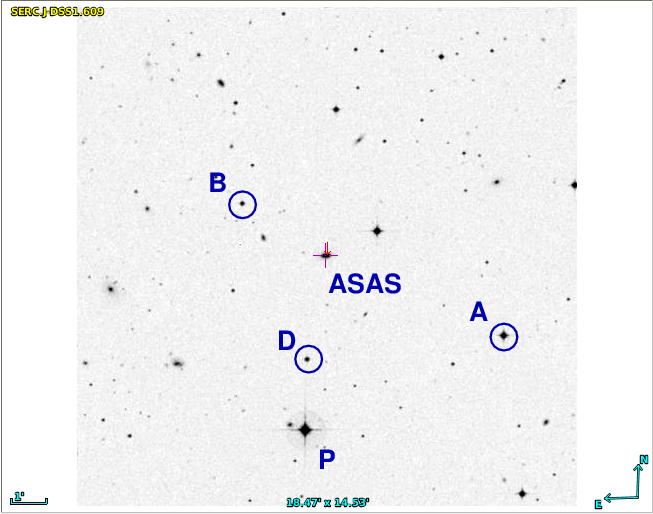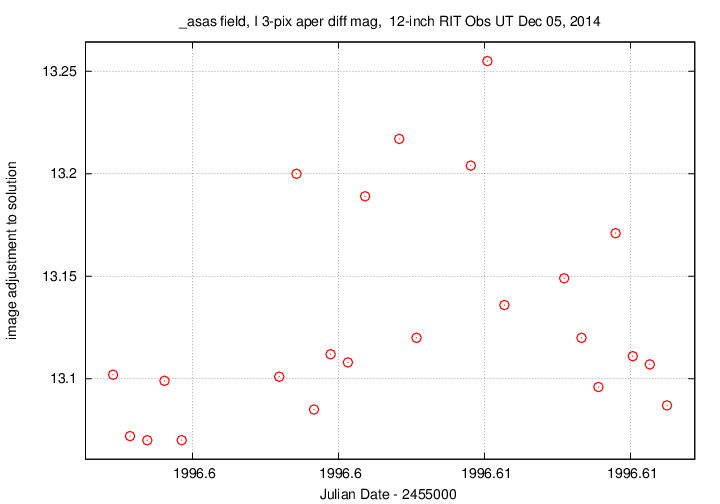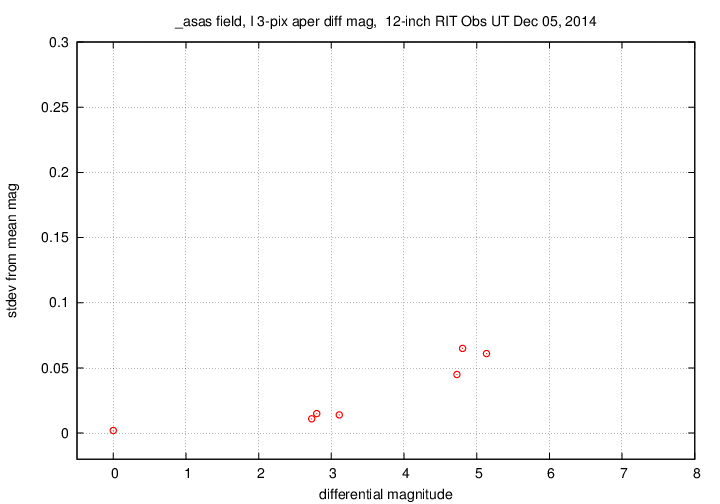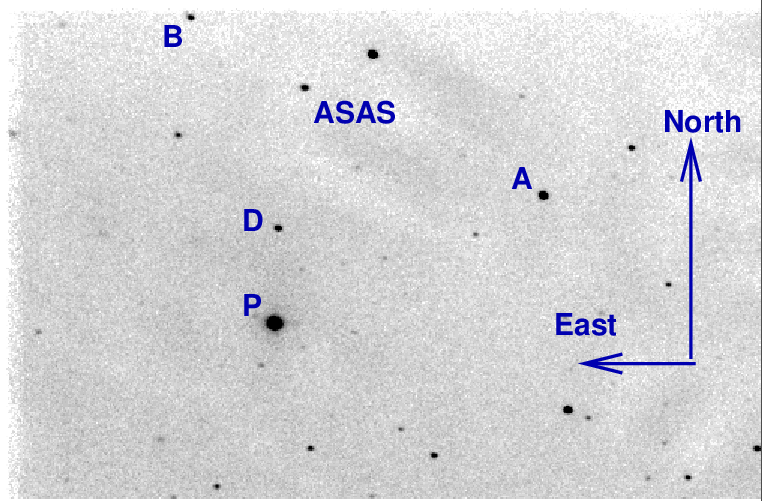
On the night of Dec 4/5, 2014, I tried observing for the first time the Type II SN known as ASAS-SN14cv. I wasn't very successful.
You can read more about this star at
John Martin has organized a group of astronomers who are gathering images and measurements of this SN from many locations. You can read the team project web page to learn more.
The main setup was:
Notes from the night
Below is a graph showing the sky brightness as a function of time during the observing run. The first half are measurements in R-band, the second half in I-band. No clouds, just bright moon.

Below is a graph showing the FWHM as a function of time during the observing run.

Here's a chart of the field of ASAS-SN14il, which is at
RA = 00:45:32.60 Dec = -14:15:32.8 (J2000)
The object sits on top of a small, faint galaxy
called
6dFGS gJ004532.6-141533
or 2MASX J00453260-1415328 .
My images do not separate the SN from the underlying host galaxy;
in fact, I can't really tell that there's a galaxy mixed into the
object, since the size of the galaxy is comparable to the
big FWHM (of order 6 arcsec) in my images.

Some of the reference stars marked above have magnitudes in the UCAC4. Specifically, the star marked "A" has i-band magnitude i = 12.025 . The bright star marked "P" is BD-15 137, at V = 9.97.
I used 30-second exposures in R-band and I-band. Neither is very good, but the I-band data is a little better. I'll discuss it only from this point forward.
The image adjustment factor graph shows some small variation, mostly due to trailing rather than clouds.

Using aperture photometry with a radius of 3 pixels (radius of 5.6 arcsec), I measured the instrumental magnitudes of a number of reference stars and the target. Following the procedures outlined by Kent Honeycutt's article on inhomogeneous ensemble photometry, I used all stars available in each image to define a reference frame, and measured each star against this frame.
The sigma-vs-mag plot shows a typical parabolic rise in scatter toward fainter stars. The target was one of the faint objects on this graph.

I combined a total of 22 exposures in I-band using a median technique. The background is blotchy, due to the nearby moon, and the target object looks very little different than a point source.

A very rough estimate of the brightness of the target, both (SN + host galaxy) together, is i = 14.1. I didn't have enough information to perform any color corrections, so this isn't worthy of sending in to the team of scientists who are following the SN.
Last modified 12/06/2014 by MWR.